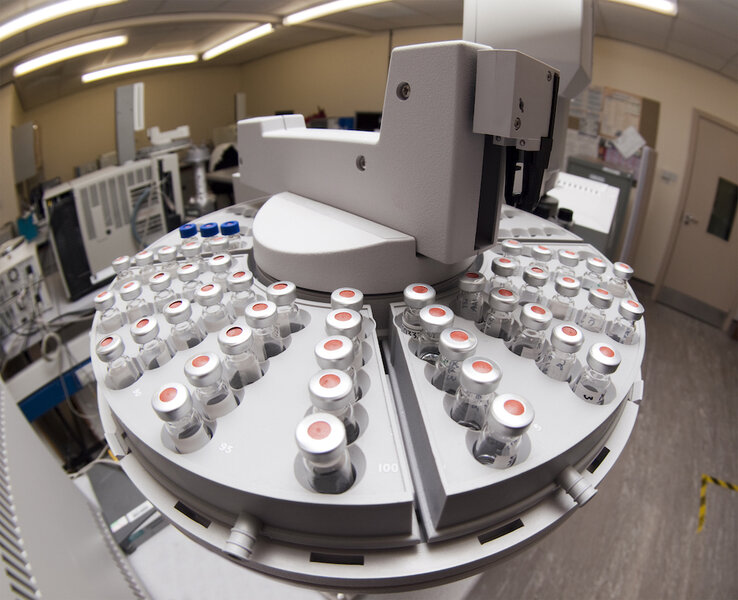Create a free profile to get unlimited access to exclusive videos, sweepstakes, and more!
Wearable gas analyzer could detect allergens, chemicals, and disease in the air
How fresh is your air, really? We might be about to find out.

In the 2012 supernatural horror film Hold Your Breath, a group of friends finds themselves at the mercy of a deceased serial killer when one of them unwittingly allows themselves to be possessed. The accepted convention of the movie is that spirits can enter your body if you don’t hold your breath while passing a cemetery. That is likely untrue (we hope), but your breath does have important interactions with the world, both visible and invisible, and those interactions can serve as an early warning system for your health.
You’re probably familiar with breath analyzers, commonly referred to as breathalyzers, if not from personal experience than through cultural osmosis. When you drink alcohol, some of the ethanol makes its way from your bloodstream and into your lungs where it exits your body in your breath. A breathalyzer takes in that ethanol and uses it for a chemical reaction inside the device which produces an electrical current. That current can then be used to estimate your blood alcohol level.
Breathalyzers hinge on a process known as gas chromatography, but they’re specialized to detect one specific chemical. Interestingly, they’re not actually detecting ethanol, but are instead looking for the reaction between ethanol and water in the air which forms acetic acid. That’s why they can sometimes be fooled if you have higher than normal levels of acetone in your breath, which can be a result of diabetes or dietary choices.
Laboratory gas chromatographs work on the same principle, but are generally significantly larger because they are designed to detect a much wider array of gaseous compounds out of an air sample. Getting that technology out of the lab and into more diverse environments has been the target of Yuze “Alice” Sun, an associate professor in the Department of Electrical Engineering at the University of Texas at Arlington. To do so, gas chromatography tech will need to be considerably miniaturized from its current state, and Sun has been awarded a $550,000 grant from the National Science Foundation to make that happen. The project was announced in a press release from UTA.
The device, dubbed “PFI-RP: Portable integrated photonic micro-gas chromatography system for rapid gas analysis,” builds on Sun’s previous study published in 2021 in the journal Biosensors, which investigated one potential miniaturization path through the use of photonic crystal slab sensors. That and other advances in the technology have led to this point, when it might be possible to put powerful gas sensing devices into smaller and smaller packages.
Still, more innovation is needed and that’s what Sun will be doing with the grant, in partnership with Weidong Zhou, an electrical engineer professor at UTA along with their industrial partner AMS Sensors USA. Together, they’ll establish new technologies to transform the historically large gas chromatography instruments into something which can be portably carried around or even worn on the body.
Applications are diverse, extending to anything which might benefit from analysis of environmental air or exhalations from the body. Sun imagines the device being used by homeowners to monitor the air quality inside their home or by firefighters to determine if an accelerant was present in a blaze. Perhaps the most interesting and important potential application for the individual is the ability to detect the presence of disease by analyzing your breath.
Diseases as diverse as bacterial meningitis, tuberculosis — the second leading cause of infectious death globally — and cancer leave chemical trails in much the same way as alcohol. Those chemical markers can be detected using gas chromatography. As a result, a miniaturized wearable device of this nature is poised to drastically improve early diagnosis, putting your health right on your wrist if not in the palm of your hand.



























